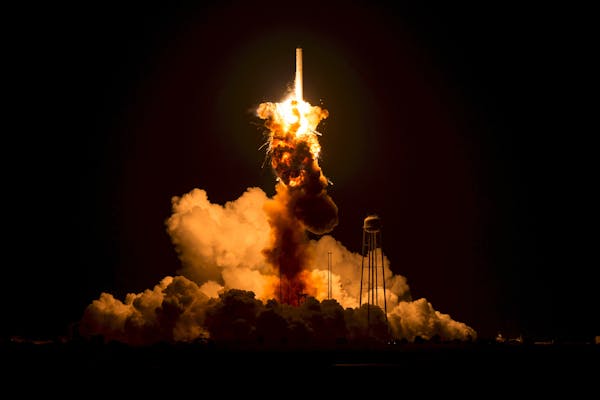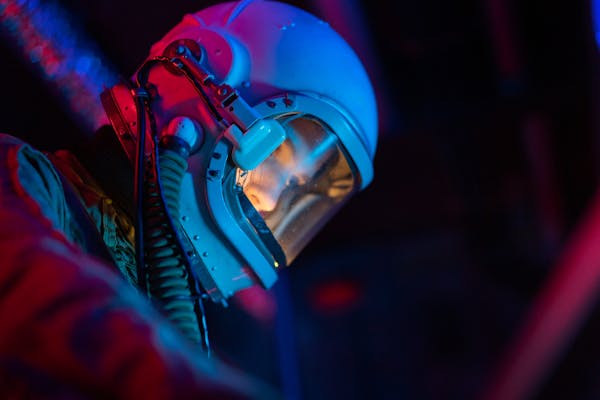
The primary issue that has saved humanity for countless centuries has been the less speed of development yet, in addition, the troublesome exit into space.
For a boat to have the option to overcome gravitational powers and go out into space, leaving the planet and the world's air and putting itself in a circle, the expected least travel speed is around 28,476 km/h. To leave the Earth's circle on which a boat is moving like a satellite, a boat needs a base speed of 40000 km/h.
For quite a while, such a speed was truly challenging to accomplish. Indeed, even with an immense measure of compound fuel ready, a rocket needed to toss a ton of rocket stages (modules) trying to escape the ground. Other than the immense fuel utilization (also the colossal contamination created), the boat likewise experiences different specialized troubles, which most frequently make it leave and return (the bath) and to the ground. The bus has endeavored to change something from this troublesome beginning, emerging from the air, slowly planted, similar to a plane, and not upstanding like a rocket. They, hence, enjoyed the benefit of a lower mass, lower fuel utilization, and protection from progressing by making them more like planes. Likewise, such a boat could arise and get back to the earthly space a few times and not similarly as.
The bus was a step in the right direction for mankind, even though it was all the while moving gradually.

Then came the particle (gas) reactors for spatial boats, which figured out how to speed up ships at speeding up. Of all rockets that were sent off by people, some had great speed. The ongoing record is claimed by the New Skylines mission to Pluto and the Kuiper belt. Sent off in 2006 by NASA, the rocket had a speed of 58,536 kilometers each hour, yet it has arrived at north of 160,000 kilometers each hour on its course. For correlation, Explorer 1 right now has a speed of 61,200 kilometers each hour. As to heliocentric speed, speed recorders are the Helios I and II tests, which were sent off in 1974 and 1976 and arrived at paces of 252,000 kilometers each hour. The Juno mission to Jupiter will send a rocket that will arrive at a speed of north of 250,000 kilometers each hour.
What's more, in 2018, another NASA mission called Sun-based Test In addition to will send off a boat that will go at a shocking pace of 720,000 kilometers each hour. This would mean the test could go from Earth to the Moon in about 30 minutes and the Earth-Mars distance in around 10 days rather than five months (Aversa et al., 2017a-e; 2016a-o; Berto et al., 2016a-d; Mirsayar et al., 2017; Petrescu and Petrescu, 2016a-c; 2013a-d; 2012a-d; 2011a-b; Petrescu, 2016; 2012a-b; 2009; Petrescu and Calautit, 2016a-b; Petrescu et al., 2016a-c).
Techniques and Materials
Spaceflight utilizes space innovation to make spaceships fly into space. Spatial investigation (space perception, surveillance satellites, and other Earth perception satellites), as well as business exercises (satellite telecom and space travel industry), are utilized in space investigation and space investigation.
A space flight is a trip of a flying body that happens outside the World's air, that is to say, no less than 36,000 feet over the earthly surface, where there is no air, and the flying items never again experience scouring opposition. The limit between air flights and space flights is situated, as per the Global Flying League (FIA), at a level of around 100 Km over the Earth.
Just in the twentieth 100 years, when the rocket innovation was conceived and created, it became workable for such durable speed increases to permit space flight and hence to leave Earth for longer. The hypothesis of room flight was among others, by the Russian Constantin Tiolkovski (1857-1935) created, who tracked down the essential condition of the climb of the rockets. Likewise, US engineer R.H. Goddard has previously fabricated little rocket motors starting around 1910 and in 1936 he has figured out how to send off a rocket with fluid fuel.
To arrive at a spatial circle, a Natural body should accomplish, at Earth's speed, a fast to beat the erosion of the air and the gravitational draw of the Earth. This speed, called the main vast speed, is 7.9 km/sec. or then again at 28,476 km/hour. By this speed, the radial power of the flying body rises to (makes up for) the gravitational power of the Earth.
Satellites fly to a level of no less than 36,000 meters over the ground. A geostationary meteorological satellite's remaining parts "stopped" in an earthly circle over a mark of the Earth (with tiny deviations) on the grounds that in 24 h it likewise turns around its hub. Obviously, not all satellites are geostationary ("fixed") and they can disperse on factor spatial directions above the land surface for various purposes.
In the event that the speed of a delivered body (satellite, and so on) becomes more prominent than the main vast speed, then it follows an extended, curved circle direction. On account of the cutoff, when the farthest mark of the curved circle keeps an eye on vastness (∞), then the satellite doesn't stay in a shut, orbital direction and follows an explanatory direction constantly leaving from the home planet in the outside space. This is the "second vast speed". Solidly, to escape the natural (gravitational) circle and to start an intuitive flight, a speed of 11.2 km/sec is required for Earth or 40,000 km/h.

Just beneath the "second speed" lies the supposed "getting away" speed through which a body (space test) avoided on Earth can accompany regard to the earthly "fascination," yet it actually stays in the planetary group of Sun's fascination, as a fake planetoid. It is feasible to course radio transmissions to a space test, telling little drive motors on board so it tends to be situated towards one or other of the planets of the planetary group.
The main trip to an earthly spatial circle was made by the Soviet satellite "Sputnik" on October 14, 1957, and the primary human flight was to cosmonaut Yuri Gagarin in April 1961. The main trip to the moon a human team was to the American space travelers Armstrong, Aldrin, and Collins on July 16, 1969. Armstrong and Aldrin secured on July 20, 1969, with the Bird sexennial module, while Collins guided the Columbia Order module that was circle the Moon.
Large numbers of the rocket are called rockets (vast). The main piece of a vast rocket that profits to Earth are known as a space case, which incorporates order, control, and estimation gear (counting flight information and recorded research information) and space travelers for ran shuttle human. Cases ought to be given in various ways against overheating when once again introduced into the world's air. The drive (force) expected to arrive at the starting paces is accomplished by rocket engines of the sort receptive, i.e., motors in which the fuel (fluid or strong) consumes at a great speed with the assistance of oxidants, at a steady strain of 20 ÷ 40 ATM. also, temperatures above 3,000°C, immense measures of drive gas emerging, firmly advanced by spouts situated behind the rocket's body, making the rocket move in the other course. There are a few such diureses and by their control, it is feasible to orientate and equilibrate the vast rocket. To facilitate the send-off of rockets, they worked with a few phases of fuel that are deserted after the fuel has been depleted. Fuel put away in a fluid structure is simpler to control and longer than strong ones.

Interstellar travel or interstellar flight is an excursion regardless of the human team that happens between stars. The idea of interstellar travel by rocket is a typical topic in sci-fi. Interstellar travel is adroitly undeniably more troublesome than the interplanetary excursion that happens between the planets of a similar star framework. The intergalactic excursion (i.e., the excursion between various worlds) would be considerably more troublesome than interstellar.
Numerous logical papers have been distributed regarding these ideas. Considering the vital travel time and design, both automated and in-flight interstellar travel appears to be conceivable, albeit both postures have extensive mechanical and monetary difficulties, so humanity is probably not going to send off such a rocket soon, particularly those with a human team. NASA, ESA, and other space organizations have been engaged in research on these trips for a long time and have arrived at various hypothetical methodologies.
The requirement for energy appears to make the interstellar excursion for one-age ships illogical, making it safer to convey a ran venture in a suspended condition in covered protected ships from interstellar risks.
The primary test looked at by making an interstellar excursion is the immense distance to go. This implies that you want a fast and/or extremely lengthy travel time. The expected travel time with the most sensible drive strategies would be from a long time to centuries. Hence, an interstellar boat would be more seriously presented to the risks of interplanetary excursions, perils like a vacuum, radiation, imponderability, and micrometeorites. The long excursion time makes it hard to plan human missions. The key furthest reaches of room time will be another test. Also, predicting the support of interstellar excursions for regular monetary reasons is troublesome.
A significant element that builds the trouble of planning this outing is the energy that should be given to get a sensible travel time. A lower limit for the expected energy is the dynamic energy K = ½ mv2 where m is the last mass. In the event that there is a requirement for deceleration on appearance and this can't be accomplished by different means than with the motors of the boat, then the expected energy will be no less than two times.
Tq for the awesome share.
ReplyDelete